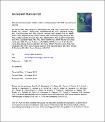The dementia-associated APOE ε4 allele is not associated with REM sleep behavior disorder
| dc.contributor.author | Gan-Or, Ziv | |
| dc.contributor.author | Montplaisir, Jacques-Yves | |
| dc.contributor.author | Ross, Jay P. | |
| dc.contributor.author | Poirier, Judes | |
| dc.contributor.author | Warby, Simon | |
| dc.contributor.author | Arnulf, Isabelle | |
| dc.contributor.author | Strong, Stephanie | |
| dc.contributor.author | Dauvilliers, Yves | |
| dc.contributor.author | Leblond, Claire S. | |
| dc.contributor.author | Hu, Michele T. M. | |
| dc.contributor.author | Högl, Birgit | |
| dc.contributor.author | Stefani, Ambra | |
| dc.contributor.author | Monaca, Christelle | |
| dc.contributor.author | Cochen De Cock, Valérie | |
| dc.contributor.author | Boivin, Michel | |
| dc.contributor.author | Ferini-Strambi, Luigi | |
| dc.contributor.author | Plazzi, Giuseppe | |
| dc.contributor.author | Antelmi, Elena | |
| dc.contributor.author | Young, Peter | |
| dc.contributor.author | Heidbreder, Anna | |
| dc.contributor.author | Barber, Thomas R | |
| dc.contributor.author | Evetts, Samuel G. | |
| dc.contributor.author | Rolinski, Michal | |
| dc.contributor.author | Dion, Patrick A. | |
| dc.contributor.author | Desautels, Alex | |
| dc.contributor.author | Gagnon, Jean-François | |
| dc.contributor.author | Dupré, Nicolas | |
| dc.contributor.author | Postuma, Ronald B. | |
| dc.contributor.author | Rouleau, Guy | |
| dc.date.accessioned | 2020-05-06T16:49:23Z | |
| dc.date.available | NO_RESTRICTION | fr |
| dc.date.available | 2020-05-06T16:49:23Z | |
| dc.date.issued | 2016-10-13 | |
| dc.identifier.uri | http://hdl.handle.net/1866/23341 | |
| dc.publisher | Elsevier | fr |
| dc.subject | APOE | fr |
| dc.subject | REM sleep behavior disorder | fr |
| dc.subject | Genetics | fr |
| dc.subject | Parkinson's disease | fr |
| dc.subject | Dementia with Lewy bodies | fr |
| dc.title | The dementia-associated APOE ε4 allele is not associated with REM sleep behavior disorder | fr |
| dc.type | Article | fr |
| dc.contributor.affiliation | Université de Montréal. Faculté de médecine. Département de psychiatrie et d'addictologie | fr |
| dc.identifier.doi | 10.1016/j.neurobiolaging.2016.10.002 | |
| dcterms.abstract | The present study aimed to examine whether the APOE ε4 allele, associated with dementia with Lewy bodies (DLB), and possibly with dementia in Parkinson's disease (PD), is also associated with idiopathic rapid eye movement sleep behavior disorder (RBD). Two single nucleotide polymorphisms, rs429358 and rs7412, were genotyped in RBD patients (n = 480) and in controls (n = 823). APOE ε4 allele frequency was 0.14 among RBD patients and 0.13 among controls (OR = 1.11, 95% CI: 0.88–1.40, p = 0.41). APOE ε4 allele frequencies were similar in those who converted to DLB (0.14) and those who converted to Parkinson's disease (0.12) or multiple system atrophy (0.14, p = 1.0). The APOE ε4 allele is neither a risk factor for RBD nor it is associated with conversion from RBD to DLB or other synucleinopathies. | fr |
| dcterms.isPartOf | urn:ISSN:0197-4580 | fr |
| dcterms.isPartOf | urn:ISSN:1558-1497 | fr |
| dcterms.language | eng | fr |
| UdeM.ReferenceFournieParDeposant | Gan-Or, Z., Montplaisir, J. Y., Ross, J. P., Poirier, J., Warby, S. C., Arnulf, I., ... & Högl, B. (2017). The dementia-associated APOE ε4 allele is not associated with rapid eye movement sleep behavior disorder. Neurobiology of aging, 49, 218-e13. | fr |
| UdeM.VersionRioxx | Version acceptée / Accepted Manuscript | fr |
| oaire.citationTitle | Neurobiology of aging | |
| oaire.citationVolume | 49 | |
| oaire.citationStartPage | 218.e13 | |
| oaire.citationEndPage | 218.e15 |
Files in this item
This item appears in the following Collection(s)
This document disseminated on Papyrus is the exclusive property of the copyright holders and is protected by the Copyright Act (R.S.C. 1985, c. C-42). It may be used for fair dealing and non-commercial purposes, for private study or research, criticism and review as provided by law. For any other use, written authorization from the copyright holders is required.


